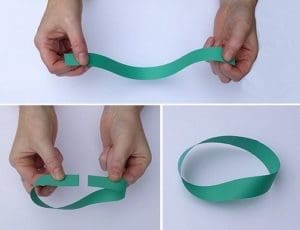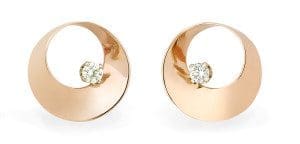

Möbius – The Story Behind our Collection

Möbius – Simple, elegant, timeless and symbolic but where did it come from?
Was it in high school geometry class? We can’t remember exactly when we were first introduced to the Möbius strip. This geometric form is quite the oddity: an endless surface with only one side and one edge. For topology students and fans, this 3-dimensional form was first separately, and somewhat simultaneously, described by two German professors Johann Listing and mathematician August Möbius in the mid-19th century.
Creating a mobius strip, whether in paper or rose gold, is an eye-opener, if not a head-scratcher. Take a rectangular strip of paper – two sides, four thin edges. Give it a twist, then connect the ends. Go ahead: run your finger around the surface. Voila! Just one side and one continuous edge. Intriguing. Two dimensions transform into three! And watch this quick video to be simply astonished.
Twists of fates often may seem like happen-stance. An unexpected detour. One seemingly minor schedule change. The synchronicity of a “chance” encounter may change everything – or at least our way of looking at things. Two people setting out to create a life together hints at a certain magic in the oneness of two.
It’s imagery and simplicity resemble a 3-D infinity symbol. Its form aptly reflects the captivating concept – the mysterious “Oneness of Two.” It seemed a compelling form to explore as we crafted wedding and engagement rings, with their undulating surface of yellow, white or rose gold. The simplicity and elegance of Möbius’ form begs for experimentation with different sizes – multiple twists, various gemstones or colors of gold – for bracelets, necklaces, earrings.
We’ve created and gift-wrapped hundreds of Möbius treats and surprises from our workshop over the last several decades.
Visit our showroom nestled in the heart of the Freeport, Maine outlets to see the collection or explore your ideas.




